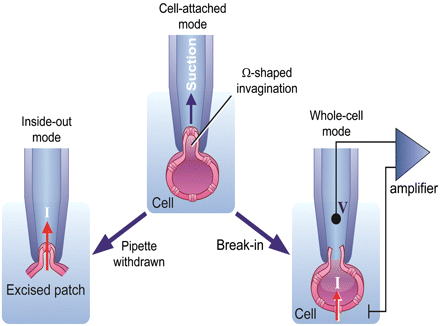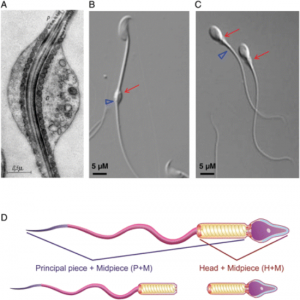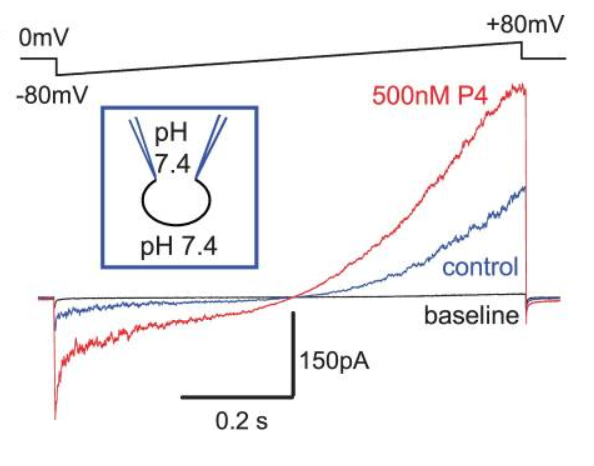Electrophysiology, specifically patch clamp recording, is a technique that our lab often uses to measure the activity of ion channels.
The figure in to the right demonstrates the modes of patch-clamp recording.
The application of electrophysiology on sperm cells is a relatively recent development, having been pioneered by Dr. Lishko and her husband, Dr. Yuriy Kirichok of UCSF, in 2011. In sperm cells, the patching is done through the cytoplasmic droplet.

Figure from Kirichok et al. 2011

Figure from Kirichok et al. 2011
Reading an electrophysiology graph
The x-axis of the diagram is the time. During the recording, there is a voltage ramp created by 2 probes, which in this instance is going from a -80 mV membrane potential to a +80 mV membrane potential.
On the Y-axis is the resulting current. A positive value for the current corresponds to positive ions leaving the cell or an influx of negative ions. Conversely, a negative value for the current corresponds to an influx of positive ions or efflux of negative ions.
The voltage value at which the current is zero is the reversal potential, which is the membrane potential at which there is no driving force for net ionic flow across the membrane in either direction.

Figure from Sumigama et al., 2015

